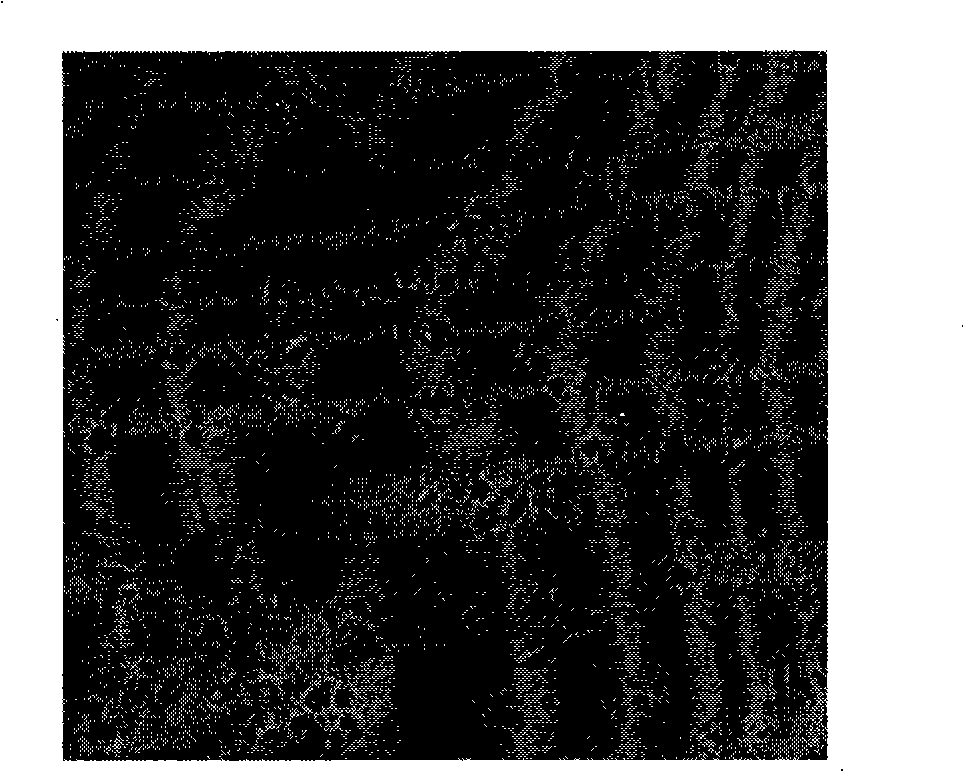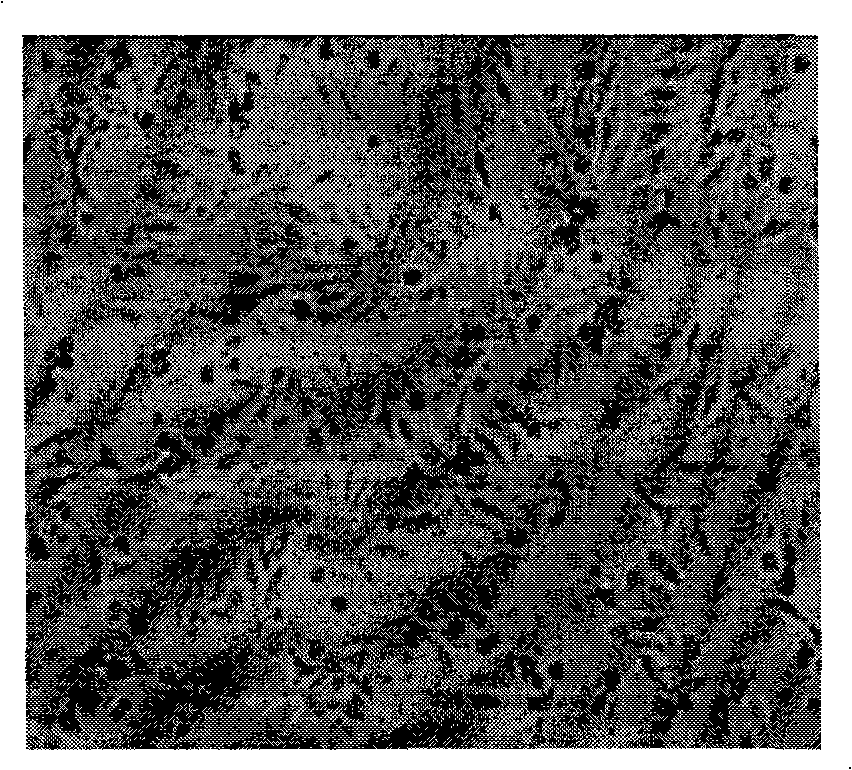Method for separating and cultivating porcine marrow endothelial progenitor cell
A technology of endothelial progenitor cells and culture methods, which is applied in the field of isolation and culture of porcine bone marrow endothelial progenitor cells, can solve the problems of high cost of immunomagnetic bead separation methods, inconsistent phenotypic expression rates, and reduced cell acquisition rate, etc. The effect of high efficiency, convenient material collection and wide source
- Summary
- Abstract
- Description
- Claims
- Application Information
AI Technical Summary
Problems solved by technology
Method used
Image
Examples
Embodiment 1
[0075]1) Isolation of mini-pig bone marrow mononuclear cells: Take 5-10 ml of anti-coagulated bone marrow from the ilium of mini-pig under sterile conditions, transfer the bone marrow cells into a test tube and mix them with sterile PBS solution 1:1 and centrifuge (20°C, 400g, 10 minute). After centrifugation, remove the supernatant, and then mix with sterile PBS solution 1:1. Take 10ml of Ficoll solution (Histopaque-10771, 1.077g / ml, Sigma company) and add it into a blank test tube in two parts; slowly drop the mixed bone marrow cell liquid into the test tube containing Ficoll solution (this step must be slow, be careful not to Break the plane between Ficoll and bone marrow cell fluid) and then centrifuge (20°C, 900g, 30 minutes). After centrifugation, first remove the uppermost supernatant (be careful not to take away the mononuclear cell layer under the supernatant), take out the mononuclear cell layer and add it to a blank test tube, then add 1:1 sterile PBS solution and ...
PUM
 Login to View More
Login to View More Abstract
Description
Claims
Application Information
 Login to View More
Login to View More - R&D
- Intellectual Property
- Life Sciences
- Materials
- Tech Scout
- Unparalleled Data Quality
- Higher Quality Content
- 60% Fewer Hallucinations
Browse by: Latest US Patents, China's latest patents, Technical Efficacy Thesaurus, Application Domain, Technology Topic, Popular Technical Reports.
© 2025 PatSnap. All rights reserved.Legal|Privacy policy|Modern Slavery Act Transparency Statement|Sitemap|About US| Contact US: help@patsnap.com



